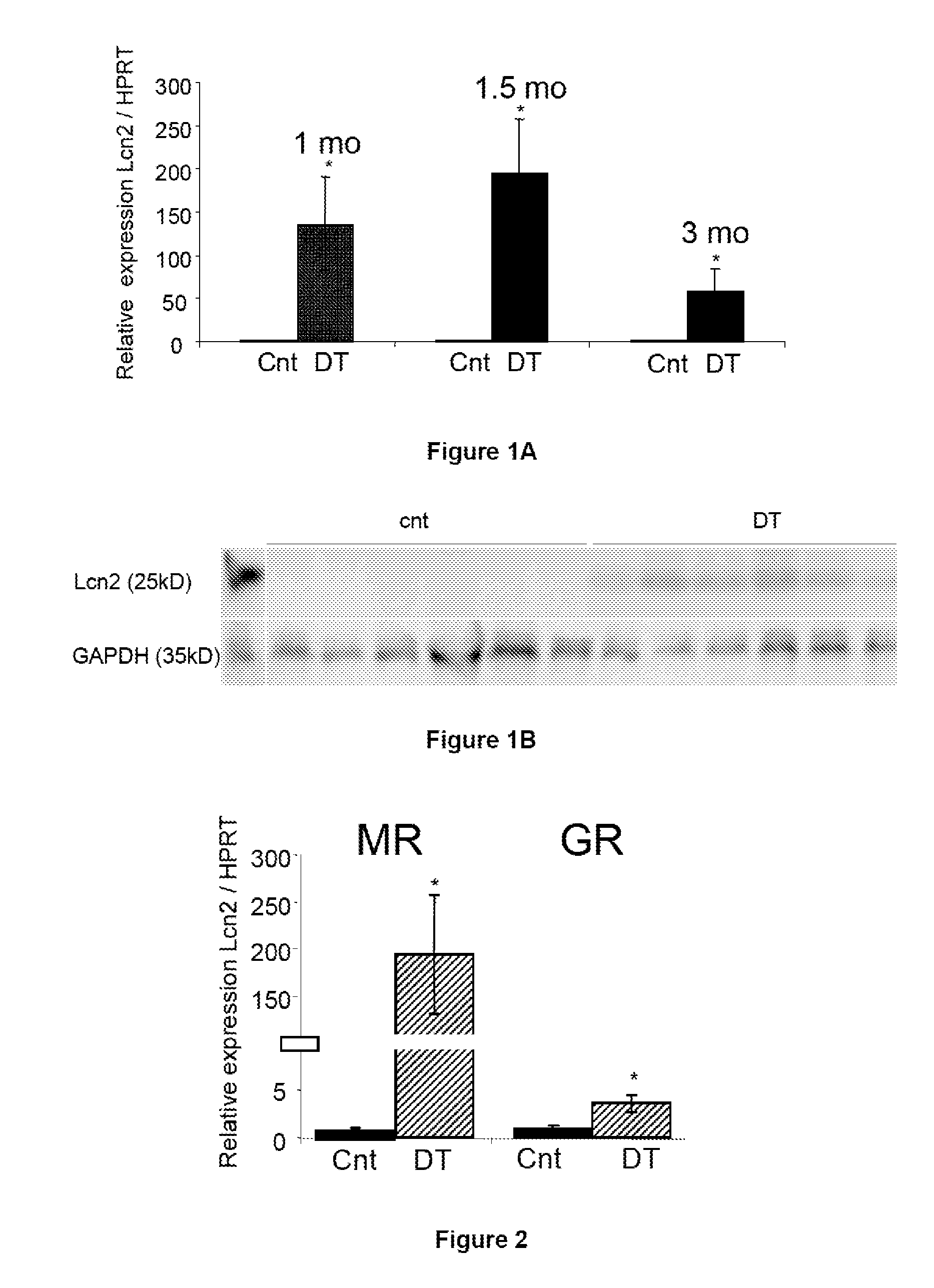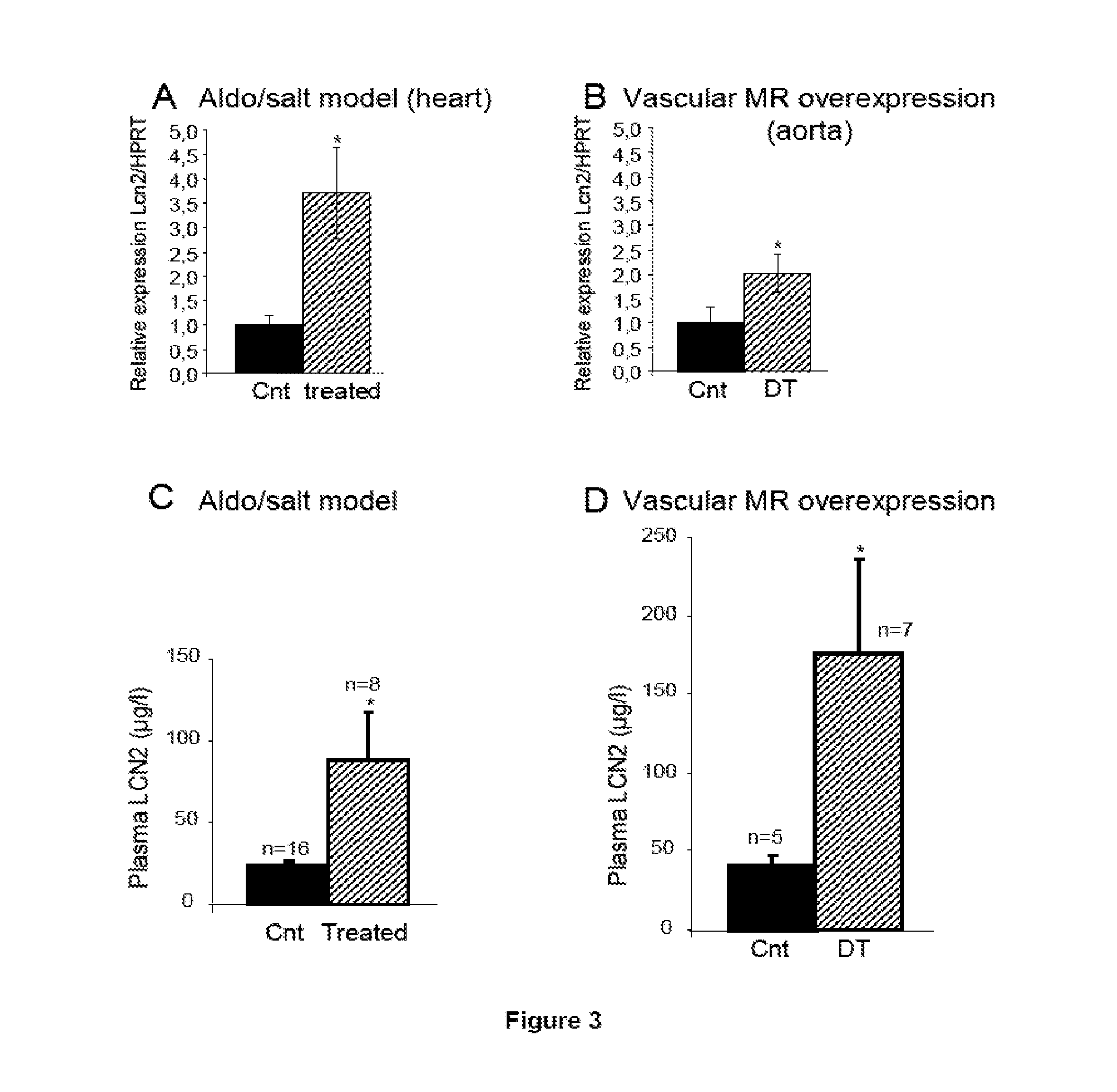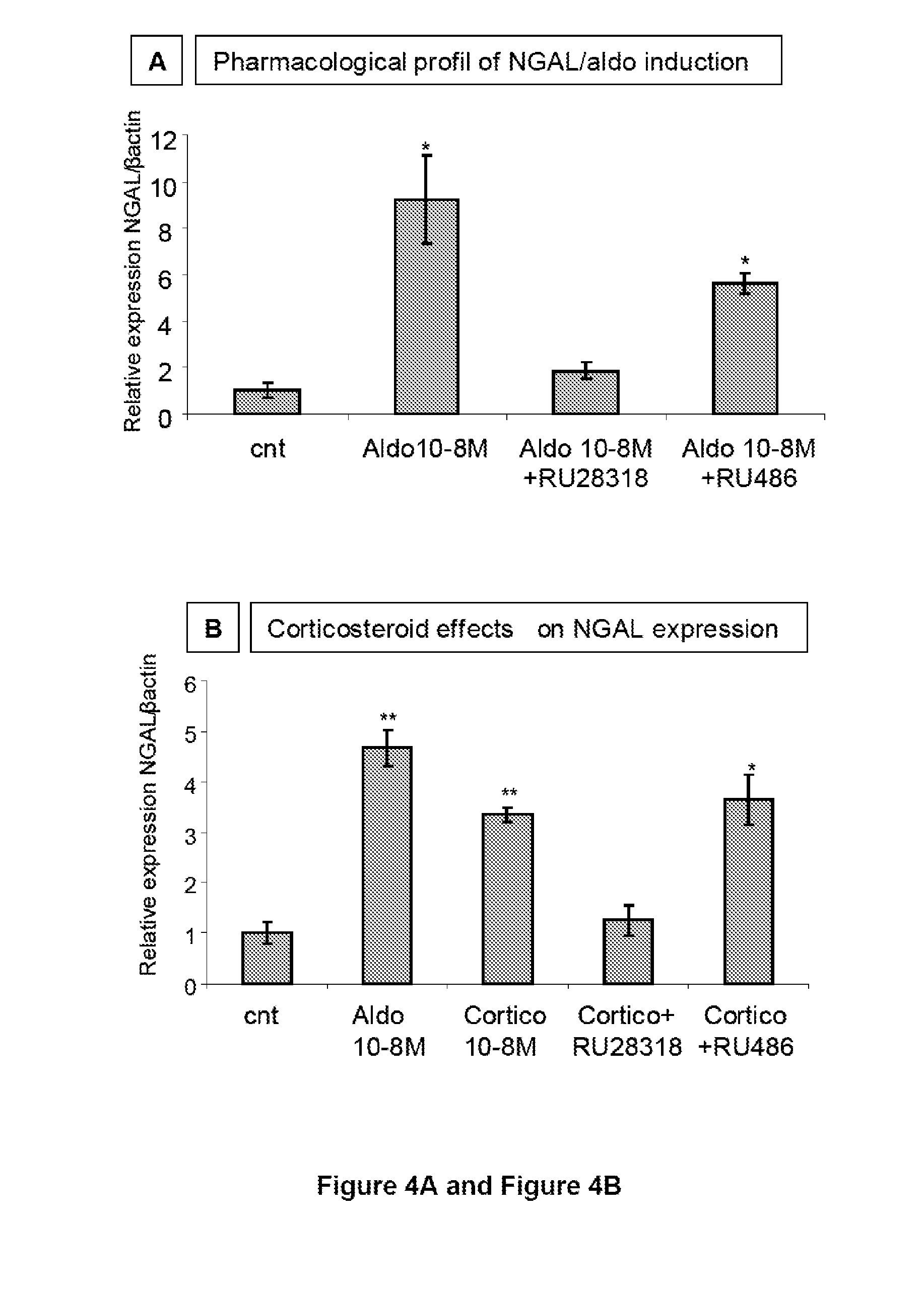Biomarkers of Mineralocorticoid Receptor Activation
a mineralocorticoid receptor and biomarker technology, applied in the field of biomarkers of the mineralocorticoid receptor activation, can solve the problems of serious adverse side effects of mr antagonist administration in a patient, and the effect of mr activation in the cardiovascular system may occur,
- Summary
- Abstract
- Description
- Claims
- Application Information
AI Technical Summary
Benefits of technology
Problems solved by technology
Method used
Image
Examples
example 1
[0116]MR and GR transgenic mice: Mineralocorticoid receptor (MR) and glucocorticoid receptor (GR) transgenic mice allowed conditional expression of the human MR or GR, respectively. MR and GR transgenic mice were obtained by breeding the in-house generated acceptor mice that allowed conditional, inducible expression of hMR or hGR when crossed with appropriate transactivator mice. These conditional transgenic models have been described in Ouvrard-Pascaud et al. (2005) and Sainte-Marie et al. (2007). To identify genes selectively modulated by MR in the heart, the MR and GR acceptor mice were crossed with the MHC-tTA transactivator mice provided by G. Fishman, Columbia University, NY, USA) (Yu et al. 1996) allowing cardiomyocyte-specific expression of hMR and hGR, respectively. This resulted in 4 fold overexpression of MR or 3 fold increase glucocorticoid binding in the heart of MR or GR conditional mice, respectively, as compared to control littermates. To avoid early embryonic lethal...
example 2
[0134]The plasma level of Lcn2 / NGAL has been measured in a population of healthy subjects.
[0135]Men and women aged between 18 and 85 years-old were included in the study, provided that they had presented no acute pathology in the past 7 days and were not under any cardiovascular treatment. Further exclusion criteria for healthy controls were: known high blood pressure (greater than 140 / 90 mmHg or greater than 160 mm Hg if older than 65); known renal failure, known diabetes, pregnancy, cancer diagnosed within the past 5 years or evolutive neoplasia, chronic liver pathology, connectivitis, Crohn's disease, evolutive tuberculosis, exertional angina, acute coronarien syndrome, history of coronopathy, carotidien endarterectomy and known abdominal aortic aneurysm.
[0136]The plasma level of Lcn2 / NGAL of the healthy subjects was generally comprised between 40 and 80 μg / ml.
[0137]The plasma level of Lcn2 / NGAL of patients affected with a cardiovascular disease, diabetes, obesity or metabolic sy...
example 3
[0138]Chronic overexpression of MR or GR in cardiomyocytes may lead to altered signaling pathways, representing adaptations of the cells, different from those induced by short-term corticosteroid treatment. To analyze the molecular consequences of chronic MR activation in vivo in the heart, we investigated cardiac gene expression of MR-cardiac mice using Cardiochips®, i.e. microarrays including 5419 genes that had been selected for their involvement in cardiovascular and / or skeletal muscle normal and pathological functioning. Cardiomyocyte MR overexpression for 6 weeks resulted in about 24 up-regulated and 23 down-regulated genes. Interestingly, most of them differed from GR-regulated genes that were determined in parallel in GR-cardiac mice (about 74 GR up-regulated genes and 70 GR down-regulated genes). Moreover, most of the MR-regulated genes did not change in the GR-cardiac mouse model, indicating that each steroid receptor controls a distinct pattern of gene expression in cardi...
PUM
| Property | Measurement | Unit |
|---|---|---|
| Level | aaaaa | aaaaa |
Abstract
Description
Claims
Application Information
 Login to View More
Login to View More - R&D
- Intellectual Property
- Life Sciences
- Materials
- Tech Scout
- Unparalleled Data Quality
- Higher Quality Content
- 60% Fewer Hallucinations
Browse by: Latest US Patents, China's latest patents, Technical Efficacy Thesaurus, Application Domain, Technology Topic, Popular Technical Reports.
© 2025 PatSnap. All rights reserved.Legal|Privacy policy|Modern Slavery Act Transparency Statement|Sitemap|About US| Contact US: help@patsnap.com



